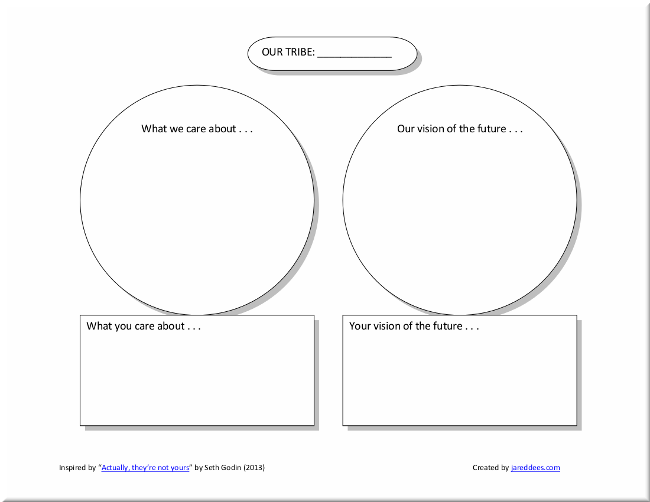Reading Seth Godin’s blog post this morning (“Actually, they’re not yours“) inspired me to create a worksheet to help us think of our tribes in the right way. Authors, entrepreneurs, musicians, marketers, and businesspeople seem to be thinking of their tribes in the wrong way.
Download the Our Tribe Worksheet.
We make a mistake when we think of a tribe as my tribe (my audience, my fans, my followers, my subscribers, etc.) rather than our tribe (a community that exists on its own and is already in pursuit of a goal).
Are you familiar with Seth Godin’s term “tribe”? Here is how he defines it in his book called, fittingly, Tribes:
“A tribe is a group of people connected to one another, connected to a leader, and connected to an idea. . . . A group needs only two things to be a tribe: a shared interest and a way to communicate.” (Tribes, 1)
Seth’s point in today’s post, if I understand him correctly, is that a tribe is not ours to take. If anything, we can rent a tribe. A tribe is out there with certain values, certain things that the people in that tribe care about. They already have a vision, or at least a hope, for a future that is different from the world they live in now.
So, four questions:
1) What does the tribe care about?
2) What is their vision for the future?
and
3) What do I care about? (Does it match the tribe?)
4) What is my vision for the future? (Does it match the tribe?)
Why is this important?
Back to the book:
“Tribes need leadership. . . . People want connection and growth and something new. They want change.” (Tribes, 2)
Will you lead them?
Or better yet, will they follow you?
They might, if . . .
- You care about the same things they care about.
- You share or show them a vision of a future they desperately need and want.
I hope this simple worksheet helps you think this through. And I hope Seth will forgive me if I’ve thrown off his message.



